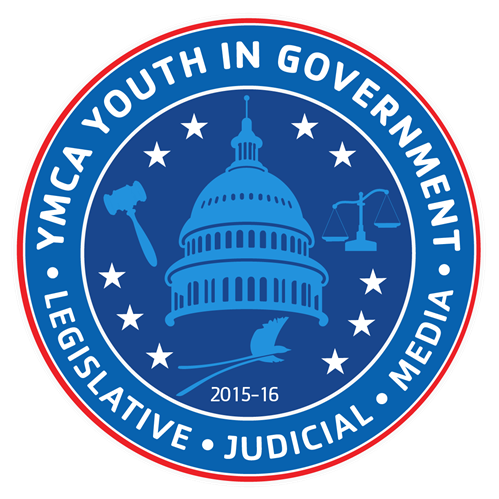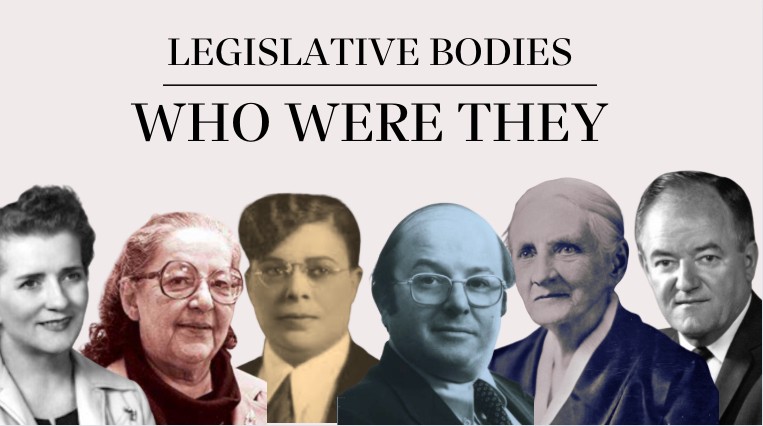Story by Nicholas Anderson, Irondale; Edited by Lale Akkin, Mounds View; Image by Lindley Johnson, Shakopee
Who is the Humphrey House named after? How about the Spear Senate? For those in the legislature, what about the namesake of your respective house or senate? Those stumped by these questions are certainly not alone. “I don’t know,” said Natalie Jansen, a senior member of the legislature from the Irondale delegation, “at this point I’ve forgotten.” In Youth in Government, even the most fundamental information about these individuals escapes most delegates. However, examining the lives of these important figures proves not only worthwhile, but incredibly fascinating.
Humphrey House
Hubert Humphrey was born on May 27th, 1911 in a small town in South Dakota. The University of Minnesota alumni was a political science enthusiast and served as the mayor of Minneapolis from 1945 to 1948. Staunchly socially progressive, he spent much of his tenure in Minneapolis attempting to address racial and religious discrimination. One of the most pivotal points of his life was when he gave his 1948 speech at the Democratic National Convention. Despite party officials’ insistence that such divisive issues be avoided at the event, his powerful speech on civil rights not only catapulted his political career, but made way for the groundbreaking pro-civil rights platform that the Democratic Party eventually adopted. Nicknamed the “Happy Warrior,” Humphrey represented Minnesota in the U.S. Senate from 1949 to 1964, and is widely considered to be one of the most effective legislators in American history. He also served as the Vice President of the United States from 1965 to 1969 under Lyndon B. Johnson, and tried at several points to secure the presidency himself. Returning to the Senate in 1971, he served dutifully until he lost his battle with cancer in 1978.
Smith Senate
Born in Kansas on Aug. 13th, 1885, Lena O. Smith came to Minneapolis in 1907 and eventually pursued higher education. Completing her degree at the Northwestern College of Law in 1921, she became the first African American woman licensed to practice law in Minnesota, and also one of the nine total African American lawyers known to have practiced law in Minnesota between 1890 and 1927. As an African Woman in the early to mid-20th century, she faced an abundance of bigotry and discrimination. Devoting her life to civil rights and activism, she played a monumental role in securing many landmark cases and protections for marginalized communities across Minnesota. She passed away in 1966.
Myers House
Ruth A. Myers, known as the “grandmother of American Indian education in Minnesota,” was born on Jan. 14th, 1926 in Minnesota. A member of the Grand Portage Band of Lake Superior Chippewa (Ojibwe), her experience in a boarding school led her to dedicate much of her life to advocating for educational reform. She is most known for her role in the production of educational tools such as textbooks and library materials that accurately reflected Native American people and their histories. In 1971, she became the first person of color elected to public office in Duluth, and served on around seventy boards and commissions in her lifetime. She passed away in 2001.
Spear Senate
Allan H. Spear, born on June 24th, 1937 in Indiana, joined the Minnesota Senate in 1972. He served until 2000, and also became the first non-lawyer to chair the Senate Judiciary Committee. On Dec. 9th, 1974, Spear revealed in an interview that he was attracted to other men, and in doing so became the first state legislator while in office to be openly gay. He was instrumental in amending Minnesota’s Human Rights Act in 1993 to prohibit discrimination on the basis of sexual orientation. He also over the course of his lifetime took on many leadership positions and received many awards relating to his work in human rights, criminal justice, and protecting vulnerable individuals. He passed away in Oct. of 2008.
Sanford House
Maria L. Sanford was born in Connecticut on Dec. 19th, 1836. She worked as an English professor at the University of Minnesota for almost thirty years, and was one of the first female professors in the United States. Nicknamed “the best-loved woman in Minnesota,” many people praised her for her communication and teaching abilities. Even when she retired, she remained incredibly involved in many subjects and social movements in both her state and the country as a whole. In her seventies, she became involved in the women’s suffrage movement and readily supported the passage of the nineteenth amendment. She died on a speaking-tour about World War I in 1920, remaining fiercely dedicated to public-speaking and activism until the very end.
Knutson Senate
Coya G. Knutson was born on August 22nd, 1912 in North Dakota. Her political career began in community activism, and her passion for causes relating to her rural and Norwegian background eventually led her to pursue loftier goals. Becoming a member of the newly formed Democratic-Farmer-Labor Party (DFL) in 1944, she won a seat in the Minnesota house of representatives in 1950. In 1954, she successfully ran for the U.S. House of Representatives, and in doing so went against her party’s wishes for her to remain in the state legislature. She was the first Minnesotan woman to serve in Congress. Despite her popularity and political successes, the DFL had little interest in keeping her power. They allegedly paid her husband to sign a letter, eventually published under the title “Coya Come Home,” that was used against her during her reelection campaign. Meant to shame her for defying the gender norms of the time, her eventual electoral loss to a Republican challenger has been attributed to the backlash from this event. Regardless, in the words of former Vice President and Minnesota Democrat Walter Mondale, her legacy will remain “electric.” She died in 1996 having spent most of her life dedicated to public service.
As delegates prepare not only for the conference, but also the lives they plan to lead, they can look to these inspiring individuals for their consideration, persistence, and bravery. Each and every person has the capability to achieve greatness. So, as you make your way through the conference and catch a glance of a sign reading “Myers House ” or “Knutson Senate,” remember to honor the extraordinary person behind that name.

